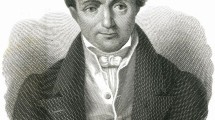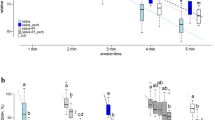Abstract
AFTER eruption human teeth acquire a structureless film, tenaciously attached to the enamel surface, which may be liberated from clean, debris-free, healthy teeth by immersion in a solution of strong mineral acid. This acid-insoluble cuticular structure has been given various names by different authorities, and in a review of the confused nomenclature on this subject it was recommended that the term ‘acquired pellicle’ be used1. Various possible origins for this pellicle layer have been proposed, and while it has usually been assumed that it is most probably of salivary origin it has also been considered that it may be (a) a horny keratinous layer formed from oral epithelium2; (b) the remains of a collagenous cementum-like layer over the occlusal surface of the teeth3; (c) dental plaque which had become structureless due to lysis of its bacteria4. A recent suggestion is that it may be derived from denatured haemoglobin5.
This is a preview of subscription content, access via your institution
Access options
Subscribe to this journal
Receive 51 print issues and online access
$199.00 per year
only $3.90 per issue
Buy this article
- Purchase on Springer Link
- Instant access to full article PDF
Prices may be subject to local taxes which are calculated during checkout
Similar content being viewed by others
References
Dawes, C., Jenkins, G. N., and Tonge, C. H., Brit. Dent. J., 115, 65 (1963).
Gottlieb, B., Z. Stomatol., 19, 129 (1921).
Levine, P. T., Glimcher, M. J., and Bonar, L. C., Science, 146, 1676 (1964).
Meckel, A. H., Arch. Oral. Biol., 10, 585 (1965).
Hodson, J. J., Nature, 209, 990 (1966).
Eastoe, J. E., and Courts, A., Practical Analytical Methods for Connective Tissue Proteins, 88 (E. and F. N. Spon, London, 1963).
Author information
Authors and Affiliations
Rights and permissions
About this article
Cite this article
ARMSTRONG, W. Amino-acid Composition of the Acquired Pellicle of Human Tooth Enamel. Nature 210, 197–198 (1966). https://doi.org/10.1038/210197a0
Issue Date:
DOI: https://doi.org/10.1038/210197a0
This article is cited by
-
Salivary and pellicle proteome: A datamining analysis
Scientific Reports (2016)
Comments
By submitting a comment you agree to abide by our Terms and Community Guidelines. If you find something abusive or that does not comply with our terms or guidelines please flag it as inappropriate.



